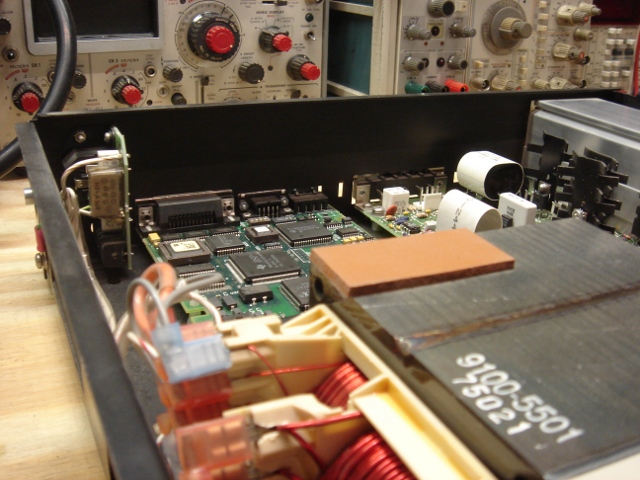Care and Feeding of the HP 6632b
Friday, July 2nd, 2010Yesterday Narrat1ve got a new (sort of) bench power supply in the form of an eBayed HP 6632b!
You can read what HP says about it but it basically kicks as much ass as I could really want or expect a single output PSU to kick. Until now I’d been using a couple of Tektronix PS503a units (which are pretty great, actually) and a Power Designs TW6050a (which is very heavy). However in the course of figuring out some VCO stuff I found myself really wanting to be able to step by small numbers of millivolts and trust with some certainty that what I was asking for was what I was getting (and the 6632b’s microamp measurement is handy for embedded stuff, too).
Anyhoo, the unit showed up all kinds of Dirt McGirt:

And had all kinds of goofy user settings in it. Ebay buyers of HP supplies take note:
Because I’m the kind of guy who reads the manual (and because a buddy of mine had just gotten one of these) I knew that it should have powered up in a certain state (namely, with the output disabled!) and it didn’t. One of the cool things about these supplies is that they talk RS-232 in many languages. One of the annoying things is that this one happened to be set to a language which sucked (COMPatibility, I guess an older GPIB compliant standard) and didn’t allow you to do many of the things that you can do with SCPI even from the front panel. After some head scratching and a LANG change this was resolved. The next problem was the fact that the front panel meter was a little off from what I was measuring at the output. “Lucky for me I have a fancy bench meter, and it’s easy to calibrate this thing,” I thought. WRONG.
Somebody had set the calibration password on this in times long gone by and there ain’t no changing it. I got the service manual and it turns out you can defeat password protection by flipping a DIP switch inside the chassis. This is when I took it apart and discovered the dirtball above.
After much swearing, compressed air, and windex, the inside of the chassis looked like this:

In addition to letting me get at the DIP switches, this also gave me a spiritual sense of wellness at having un-funked a nice piece of gear that somebody had really let go. It also made me less worried that there were secret vermin in my apartment that were taking refuge in my bench. It also made the fan run quieter.
In the course of doing this I also realized that the goobers who used this thing before had removed the terminal block jumpers from between the SENSE and OUTPUT screws. I replaced them. Who are these people? Were they so fancy they were using 4-wire? Who does that? Somehow I’m suspect.
Finally, I did the calibration. When it was done, the front panel meters were dead on, and the output voltage was within 0.2mV (worst case) of what my fancy meter says it should have been. Not perfect, but not bad for an eBay bench supply!
Finally, I installed my own “Front Panel Connectors” so I could use the thing without monkeying with the back:

Baller status!
xo
TB







